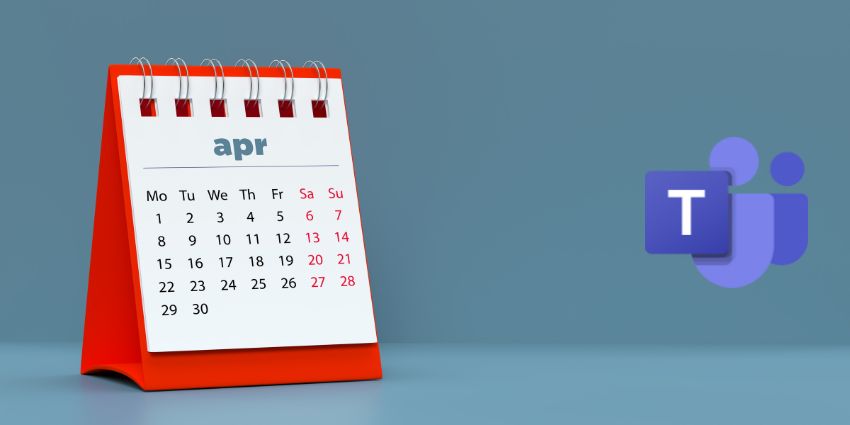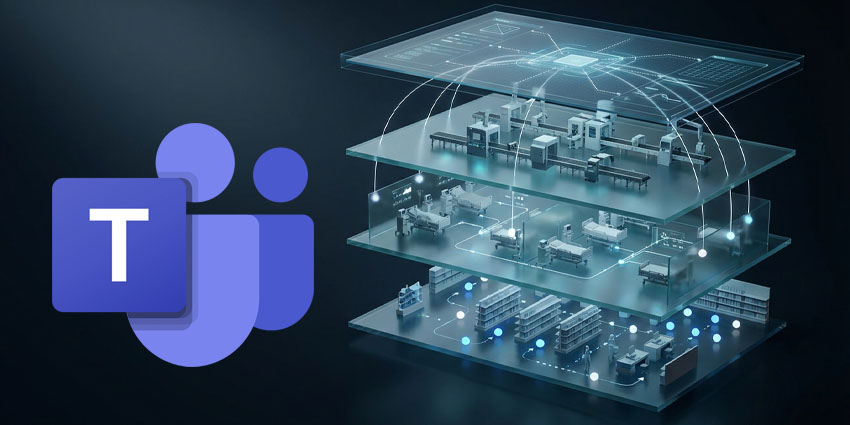Last month saw lots of product releases, improvements, and newsworthy moments within the Microsoft Teams ecosystem.
Microsoft Teams announced updates relating to chat and collaboration, meetings, webinars and town halls, Teams Phone, Teams Rooms and devices, IT admin and security, and frontline workers.
Some of the big Teams news from the last month has been the impending end of support for Teams Classic, 8×8 launched Operator Connect for Microsoft Teams, and Teams has introduced Call Record Insights to provide a way of extracting useful insights from call data.
Teams Chat and Collaboration
A new Copilot capability in chats and channels, ‘multi-turn conversations,’ allows you to ask Copilot for more details or clarification as a follow-up to your initial question. For example, you could ask Copilot to expand on one of the points from a chat summary.
The general team channel can be hidden or shown just as you can with other channels. As a result, you can minimise channel list clutter and remove distractions from the most important channel.
Group chat members can now upload an image or select an illustration or emoji as their group chat profile picture, which helps users distinguish between chats more easily.
Files can be attached to a chat based on context by simply selecting “Attach file” from the message compose box. Teams will then show you the five most relevant files from OneDrive and SharePoint based on your chat conversation to choose from.
The new default experience when creating a team will be to start from scratch. If you would prefer to use a template, you can simply select one from the template library.
Because not all channels need to be associated with a team, it is now possible to create a channel from the same menu you use to create new teams.
Teams users can also now sign in with multiple accounts across clouds, including government accounts, and get real-time notifications for all these accounts. This feature was previously announced last year alongside a host of new Teams features for multi-tenant organisations.
Teams Meetings
Teams calendar notifications can be managed from the Teams activity feed without taking you out of the flow of work. Notifications for meeting invites, cancellations, changes, and forwards will now be shown in the meeting organiser’s activity feed.
IT admins can manage how people in their organisation use Copilot for meetings and events, choosing whether Copilot is available during and after meetings.
Teams Webinars and Town Halls
Meeting organisers can select up to six languages to support live translated captions in town hall events, which town hall attendees will then be able to choose from. Teams Premium license holders will have ten language options.
A red dot will appear beside the Q&A icon to reflect when a new question or reply has been added.
Teams Phone
Voice isolation has been added to make calls clearer by using AI to remove background noise. With access to the voice profiles of meeting participants, the new technology can filter out the background noises from typical settings like noisy cafes, crowded airports, and more.
Teams Phone Mobile users can have a single phone number for both their Teams and mobile.
Call delegates and delegators can view shared call history records for the shared line, allowing for greater transparency and collaboration.
Call forwarding settings can be managed directly from a phone device’s home screen, which includes common area phones. Admins can decide whether to show call forwarding options on the home screen for personal and common area phones.
Busy on busy settings can be configured with preferences set to determine how calls are routed when you are busy or engaged in another call.
An incoming call notification can redirect incoming calls to voicemail, in addition to the traditional options of accepting and declining the call.
Teams phone devices can now make calls from the phone number assigned to an auto attendant or call queue.
Admins can use a configuration profile in the Teams admin centre to prompt users to set or reset a lock PIN on their Teams phone device.
Teams Rooms and Devices
The Teams device store within the Teams apps allows you to easily find purchased Teams-certified devices for personal or shared use cases, including webcams, headsets, desk phones, Teams Rooms, and more.
As an additional security feature, admins can configure the requirement for a meeting ID and passcode to join a Teams Rooms meeting on Windows or Android.
Teams Rooms on Windows support 4K display support, including touch boards and front-of-room displays. The user interface will scale for greater readability. This does not include support for 4K video or 4K HDMI sharing.
Teams Rooms on Windows devices will run on the new Teams app, offering up to two times faster performance and 50 percent reduced memory usage.
The language in Teams Rooms on Windows can be configured to one of three language options.
The meeting chat is shown by default on the front of the room display. In-room participants can use the touch console to hide or show chat, and admins can easily adjust the default chat experience.
The home screen for Teams Rooms on Android has been made to match the look of Teams Rooms on Windows, creating a more consistent and, therefore, easier-to-operate interface for users.
The Help button will also have a Give Feedback option so that users can share their experiences and suggestions about Teams Rooms.
4K local HDMI content sharing is available for Teams Rooms on Android devices that have the necessary input capability, improving collaboration and presentation experiences.
The Teams Rooms on Windows app will automatically search for new applications and Windows updates.
User reported issues from Team Rooms devices will be sent to the Teams Rooms Pro Management portal, enabling admins to raise a support ticket or address the issue themselves.
Bring Your Own Device (BYOD) meeting rooms can be located and added in bulk into the Teams Rooms Pro Management portal. IT admins will gain new levels of visibility, as well as room insights and device usage reports if they wish through the Teams Shared Device add-on license.
New meeting room devices have also been added, including a room remote feature for the GCC cloud environment, the Huddly Crew AI multi-camera system, the Yealink Wire Headset UH35, Bang and Olufsen Cisco 950 MS earbuds, and the Dell WL7024 headset.
Teams IT Admin and Security
Admins can set up new configurations to limit presenter capabilities in meetings. For example, presenters are no longer able to control attendee microphones and cameras, remove participants from meetings, and more.
Teams Frontline Workers
Multiple instances of an app can be customised in the Teams admin centre, enabling each application to take on its own unique appearance. This helps differentiate business groups and product lines within organisations.
Earlier this month, Microsoft announced updates to the Shifts app so that frontline workers can benefit from the added option to share their availability by a specific date, while frontline managers can import schedules from Excel into Shifts.
Task publishing features have been added to include training assignments and policy tasks for frontline employees, automatic task list recurrence, and a mandatory form completion requirement.
Administrators can now speed up and simplify the sign-in process for employees by pre-filling the domain name on the Teams sign-in screen.
In case you missed it, UC Today’s Rob Scott discussed April Teams news with Tom Arbuthnot from Empowering.Cloud and a panel of seasoned Teams experts.







